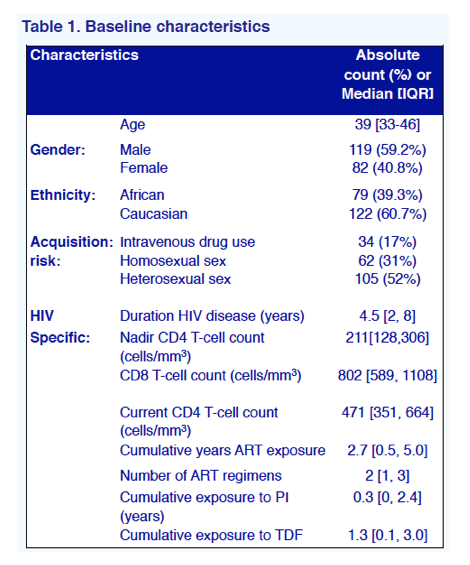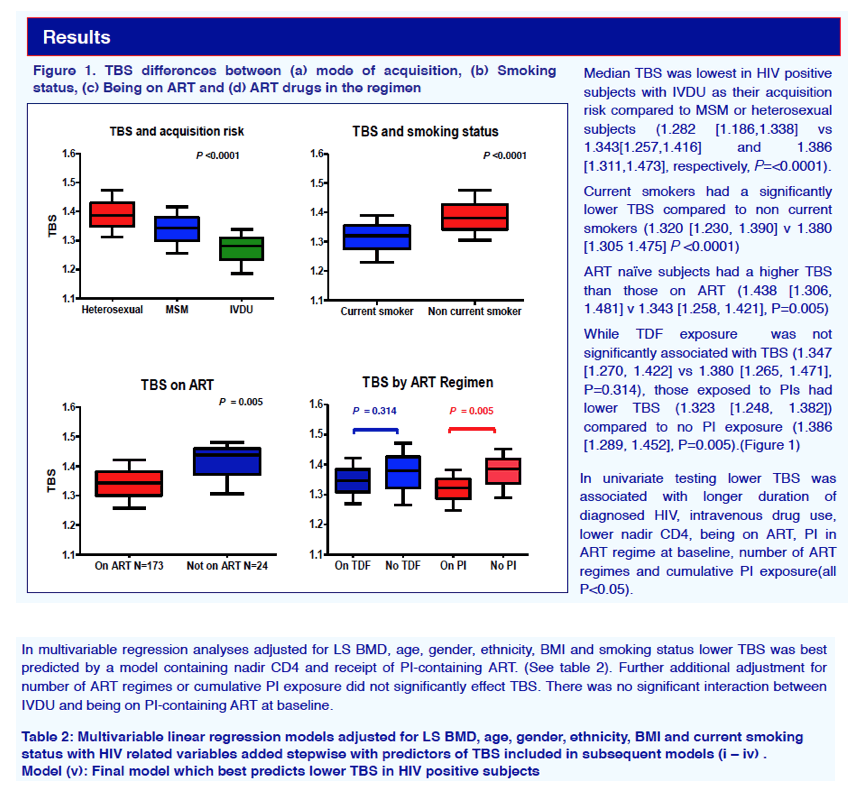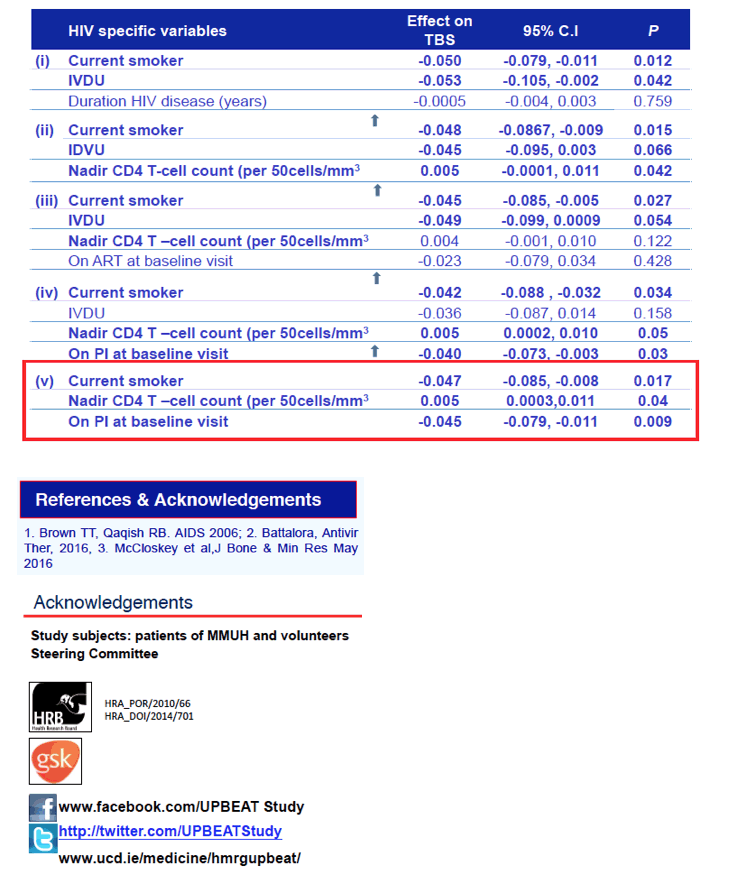 |
 |
 |
| |
Smoking, Nadir CD4s, and PI Use Tied to Bone Quality in Irish Group - The relative impact of antiretroviral drugs and baseline immune status on bone quality in HIV-positive subjects: results from the HIV UPBEAT cohort
|
| |
| |
HIV Drug Therapy, Glasgow 2016
Mark Mascolini
Current smoking, nadir CD4 count, and protease inhibitor (PI) use were associated with trabecular bone score (TBS), a novel measure of bone microarchitecture, in the Irish HIV UPBEAT cohort [1]. Tenofovir disoproxil fumarate (TDF) use did not affect TBS in this analysis.
TBS, a recently developed noninvasive measure derived from standard DXA scans, can detect differences in bone quality in people with similar bone mineral density (BMD). The HIV UPBEAT team previously showed that current smoking predicts lower TBS in this population and an HIV-negative comparison group [2]. The new analysis focused on HIV-specific determinants to TBS. A TBS at or below 1.2 signals deteriorating bone microarchitecture, while a TBS at or above 1.3 indicates stronger bones.
The study involved 201 HIV UPBEAT cohort members who had lumbar spine BMD and TBS determined from DXA scans. The group had a median age of 39 years, 59% were men, 61% Caucasian, and 17% drug injectors. Seventy-two cohort members (36%) currently smoked. The group had been diagnosed with HIV for an average 4.5 years and had taken antiretrovirals for 2.7 years. Median nadir and current CD4 counts were 211 and 471.
TBS was significantly lower in drug injectors than other HIV risk groups (P < 0.0001), in current smokers (P < 0.0001), in people currently taking antiretrovirals (P = 0.006), and in people on a PI regimen (P = 0.006), but not in those taking TDF.
Multivariate analysis adjusted for lumbar spine BMD, age, gender, ethnicity, body mass index, current smoking, nadir CD4 count, and baseline antiretroviral or PI use. In the final model current smoking was independently associated with lower (worse) TBS (-0.047, 95% confidence interval [CI] -0.085 to -0.008, P = 0.017). Taking a PI (but not TDF) at the baseline visit also predicted lower TBS (-0.045, 95% CI -0.079 to -0.011, P = 0.009). Every 50-cell higher nadir CD4 count was associated with higher TBS (0.005, 95% CI 0.0003 to 0.011, P = 0.04).
The HIV UPBEAT team concluded that smoking remains an important predictor of bone quality in people with HIV. The researchers proposed that the association between nadir CD4 count and TBS suggests "a possible effect of immune activation on bone quality." They encouraged further study of TBS to monitor bone quality and perhaps help predict fracture risk in HIV-positive people.
References
1. McGinty T, Cotter A, Sabin C, et al. The relative impact of antiretroviral drugs and baseline immune status on bone quality in HIV-positive subjects: results from the HIV UPBEAT cohort. HIV Drug Therapy, Glasgow 2016. October 23-26, 2016. Abstract P169.
2. McGinty T, Cotter A, Sabin C, et al. The impact of HIV and smoking status on bone quality: results from HIV-UPBEAT; a prospective cohort study. 18th International Workshop on Comorbidities and Adverse Drug Reactions in HIV. September 12-13, 2016. New York. http://www.natap.org/2016/AdverseReactComor/AdverseReactComor_30.htm
-----------------------
The relative impact of antiretroviral drugs and baseline immune status on bone quality in HIV-positive subjects: results from the HIV UPBEAT cohort
T. McGinty1,2, A.G. Cotter1,2, C. Sabin3, J.J. Brady4, A. Macken1, E. Kavanagh5, G. McCarthy6, P.W.G. Mallon1,2, HIV UPBEAT Study Group
Methods
1University College Dublin School of Medicine, HIV Molecular Research Group, Dublin, Ireland, 2Mater Misericordiae University Hospital, Department of Infectious Diseases, Dublin, Ireland, 3University College London Medical School, Research Department of Infection&Population Health, London, United Kingdom, 4Mater Misericordiae University Hospital, Department of Clinical Chemistry and Diagnostic Endocrinology, Dublin, Ireland, 5Mater Misericordiae University Hospital, Department of Radiology, Dublin, Ireland, 6Mater Misericordiae University Hospital, Department of Rheumatology, Dublin, Ireland.





|
| |
|
 |
 |
|
|